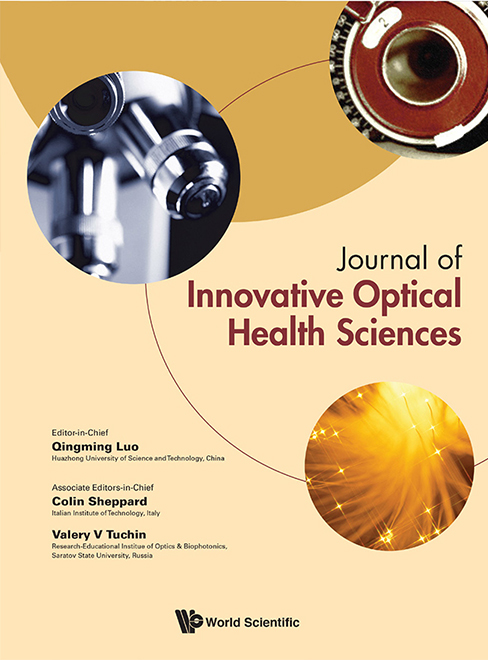 View fulltext
View fulltext
The adequate method of antibiotic choice is reported using the laser fluorescence analysis of blood plasma with the laboratory diagnostic device “Spectrolux-MB". The method is based on the ability of micro-organisms and products o
Purpose: To investigate the effects of rigid-gas-permeable contact lens (RGP-CL) wear on Zernike astigmatism and visual performance in myopic eyes. Methods: A wavefront sensor was used to evaluate Zernike astigmatism for 21 eyes w
Fluorescence resonance energy transfer (FRET) is an important photophysical mechanism which finds many applications in biophotonics, particularly in biological sensing and imaging. It is well known, there are two major factors tha
Fluorescence resonance energy transfer (FRET) technology had been widely used to study protein -protein interactions in living cells. In this study, we developed a ROI-PbFRET method to real-time quantitate the FRET efficiency of F
Published 15 August 2012 Recently, we theoretically demonstrate that utilization of silica nanobeads co-doped with Cy3 and Cy5 molecules instead of single dye molecules as fluorescent labels can enable optical resolutions far beyo
We propose and conduct both the rotating linear polarization imaging (RLPI) and Mueller matrix transformation (MMT) measurements of different biological tissue samples, and testify the capability of the Mueller matrix polarimetry
Multifocal multiphoton microscopy (MMM) has recently become an important tool in biomedicine for performing three-dimensional fast fluorescence imaging. Using various beamsplitting techniques, MMM splits the near-infrared laser be
Background and aims: The spectral properties of enhanced green fluorescent protein (EGFP) used in current visualizable animal models for nasopharyngeal carcinoma (NPC) result in a limited imaging depth. Far-red fluorescent protein
Challenges remain in imaging fast biological processes in vivo with fluorescence molecular tomography (FMT) due to the long data acquisition time. Data acquisition with limited projections can greatly reduce the time consumption,
A technical feasibility of autofluorescence ductoscopy in breast milk ducts as blood vessels phantoms has been assessed as successful. Malignant tumor can be clearly identified through the milk ducts. We also present the operation










